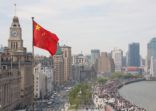The Shenzhen connect launch date was jointly-announced by the China Securities Regulatory Commission and Hong Kong Exchanges and Clearing late Friday, after weeks of hesitation. They had formally approved the scheme in August.
The new link will allow overseas investors to trade a list of 881 Shenzhen-listed stocks with a daily quota. That accounts for 71% of the A-share market capitalisation on the Shenzhen exchange.
The bourse is likened to the Nasdaq in the US for its dominance of small to mid-cap (non-state owned) high-growth companies, with an average price-earnings ratio of 44.8 times. In contrast, the Shanghai Stock Exchange is weighted heavily toward state-owned financial and industrial companies.
Matthews Asia estimated a typical active emerging markets manager “currently has less than 2% in A-shares and less than half of those will be listed in Shenzhen”, as Shenzhen-based companies are not included within the MSCI EM equity benchmark. Overall, foreigners only own about 1.4% of stocks listed in Shenzhen, it said in a research report.
Hong Kong H-share impact
“We believe this new link could be a re-rating catalyst for small-cap stocks in Hong Kong,” as mainland investors allocating money offshore will utilise the newly available Hang Seng Small Cap Index stocks as a way to diversify holdings, the report added.
EFG Asset Management’s New Capital China Equity Fund portfolio manager believes specific small- to mid-cap H-shares that have no counterparts in the A-share market are set to benefit. Examples include aircraft leasing companies. He singled out companes with low valuations and good growth prospects.
Sean Taylor, CIO for Asia-Pacific at Deutsche Asset Management, said although the valuations of Shenzhen stocks are expensive, the scheme “gives Hong Kong [investors] access to China’s fastest growing market”. Analysts can provide wider coverage of China’s new economy theme by focusing on Shenzhen A-shares.
The combined Hong Kong, Shanghai and Shenzhen exchange will be the largest in the world by volume, according to Mark Tinker, head of Framlington Equities Asia at Axa Investment Managers.
The Shanghai-Hong Kong Stock Connect, introduced two years ago, saw a net inflow of HK$354.4bn ($45.7bn) into Hong Kong-listed stocks, and RMB 132.5bn ($19.3bn) into A-shares, as of November 17. But turnover of the northbound investments were much higher at RMB 2.26trn, compared to HK$1.49trn for southbound.
Three stock markets at a glimpse
|
|
Hong Kong Exchange (Main board) |
Shanghai Stock Exchange |
Shenzhen Stock Exchange |
|
Eligible stocks for Stock Connect |
417 (Shenzhen link) |
685 |
881 |
|
Total no. listed companies |
1,706 |
1,151 |
1,834 |
|
Total market capitalization |
$3.24trn |
$4.29trn |
$3.45trn |
|
Average P/E ratio (times) |
10.83 |
16.60 |
44.78 |
|
Average daily turnover in H1 2016 |
$8.7bn |
$29bn |
$48.3bn |
Source: HKEx, as of November 25, SFC Half-yearly Review of the Global and Local Securities Markets report
















